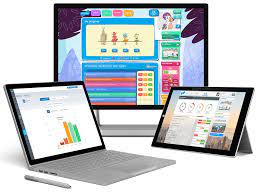Introduction:
The digital divide is a pressing issue for students across the globe, and having access to the internet has become essential in today’s technologically advanced learning environment. Project 10Million aims to bridge this gap by providing free internet service to students who need it most. This initiative is an invaluable resource for educators and parents who are looking for solutions to support their children’s education. In this article, we’ll explore how this program works, who is eligible, and how you can apply for your students to get free internet access.
What is Project 10Million?
Project 10Million is an ambitious initiative launched with the goal of providing free internet access to millions of students across the United States. The program, spearheaded by a major telecommunications company, aims to address the digital divide by offering those with limited or no connectivity resources the opportunity to use high-speed internet for educational purposes. The project believes all students should have equal access to opportunities that require internet connectivity and aims to close the gap between those who can and cannot afford it.
Eligibility for Free Internet Access:
One of the key aspects of Project 10Million is determining who can receive free internet access. To ensure fair distribution, eligibility is determined based on the following criteria:
1. Your school must have at least one student who qualifies for government-assisted meal programs such as the National School Lunch Program (NSLP).
2. Additionally, your school must already be recognized as a Title 1 school, which indicates economic disadvantage among its students.
3. Individual students must also have limited or no access to the internet at home.
How Do I Apply?
To apply for Project 10Million’s free internet service, follow these steps:
1. Visit the official Project 10Million website.
2. Locate and click on the application portal.
3. Submit your school information, including details on how many students qualify for government-assisted meal programs.
4. Provide proof of your school’s Title 1 status.
5. Fill out additional application information and provide necessary documentation.
After submitting your application, you should expect to hear back from Project 10Million on whether your application has been approved or denied within a few weeks.
How Does Project 10Million Benefit Students and Teachers?
The significance of providing reliable, free internet access to millions of students cannot be overstated. Here are a few ways in which Project 10Million benefits students and teachers:
1. Enhances educational experiences by providing seamless access to online resources, like e-books, videos, and other digital content.
2. Facilitates remote learning opportunities for students who otherwise wouldn’t have access to the internet at home.
3. Enables teachers to leverage digital tools and interactive platforms to deliver more engaging lessons.
4. Supports students in completing online assignments outside of classroom hours.
5. Fosters equity in education by giving students the same opportunities to succeed as their peers with access to high-speed internet.
Conclusion:
Project 10Million is an essential initiative helping bridge the digital divide and fight against educational inequities in the United States. By providing free internet access to millions of students in need, this program aims to enhance learning experiences and create equal opportunities for academic success across the nation.
If you’re an educator or parent looking for resources to support your student’s education journey, consider getting involved with Project 10Million and help level the playing field for these young individuals. The future depends on it.











